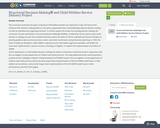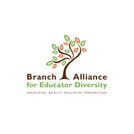
Learn about amygdala triggers and how you can control them.
- Subject:
- Psychology
- Social Science
- Material Type:
- Lesson
- Author:
- LAPU
- Date Added:
- 04/19/2023

Learn about amygdala triggers and how you can control them.

Learn more about the decision making process, and how you can make informed decisions. Footage: pexels.com

Learn more about the decision making process, and how you can make informed decisions. Footage: pexels.com

Learn more about the decision making process, and how you can make informed decisions. Footage: pexels.com

Learn more about the decision making process, and how you can make informed decisions. Footage: pexels.com

Learn more about the decision making process, and how you can make informed decisions. Footage: pexels.com

Welcome to Diversity and Social Awareness! Footage: pexels.com

Learn more about the decision making process, and how you can make informed decisions.
Footage: pexels.com

Learn more about the decision making process, and how you can make informed decisions. Footage: pexels.com

Emotional Intelligence for B.Ed, M.Ed, B.A., M.A.

Social Emotional Learning is considered the most important topic in Education.

Learn about emotional intelligence and the role that the amygdala plays.

This curriculum examines the types of decisions child welfare workers are required to make, the factors that influence their decision-making patterns, and various approaches that could potentially improve decision making on both an individual and organizational level. To further explore the issues surrounding decision making, the curriculum focuses specifically on Structured Decision Making® (SDM®), a model that can be used to assist social workers in making accurate and consistent decisions about the levels of risk for maltreatment found in families, to provide guidance about service provision, and to assist with reunification and permanency planning. In 1999, the State of California decided to make SDM® a required tool for child welfare agencies statewide, and SDM® has since been implemented in several counties, including Los Angeles. To explore the implementation and effects of SDM®and its implications on child welfare decision making, the authors conducted a multi-level study in conjunction with the Los Angeles County Department of Children and Family Services. The study addressed three central questions: (a) what are the challenges related to implementing the full SDM® model in the Los Angeles County Department of Children and Family Services (DCFS), (b) what impact does implementation of the full SDM® model have on child welfare service delivery, and (c) what impact does implementation of the full SDM® model have on child permanency outcomes? (254 pages) Kim, A. K., Brooks, D., Kim, H., & Nissly, J. (2008).

Learn more about managing your stress. Footage: pexels.com

This is the recording of the third BranchED OER Webinar: Designing OEr for Social Emotional Learning. Link to recording here.

The purpose of this study was to determine the decision-making and problem-solving approaches most frequently used by school superintendents in two mid-western states when confronted with district dilemmas. The research replicated a study conducted by Polka, Litchka, Caizi, Denig and Mete (2011) in five Mid-Atlantic states. The survey used in both studies was based on the work of Tarter and Hoy (1998). Results between the two regions were compared and significant differences were found in how superintendents manage dilemmas and their preferences for making decisions. In addition, significant differences were found between male and female superintendents in the mid-western states.

In this course, we will touch on topics like values, diversity, creating a 3rd space, and social responsibility. Footage: pexels.com

Self-awareness is a meaningful process for individuals that can help understand their own feelings, values, and thoughts. By understanding and regulating feelings, an individual is able to influence their own behavior and interactions with others.
Footage: pexels.com

By finding a sense of calmness and self-awareness, you can manage your stress. You can practice mindfulness to achieve self-awareness and understanding.
Footage: pexels.com

Do you think you are biased? How does bias shape your opinions of others? Everyone has implicit bias, and learning about your own biases can help you relate to others in a better manner. Footage: pexel.com